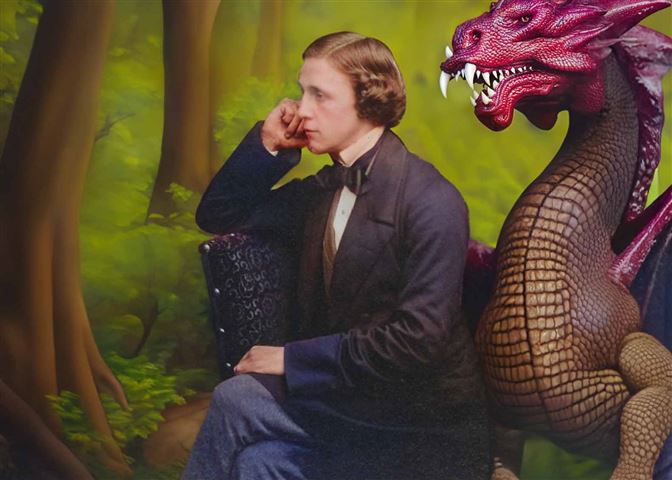Home »
Articles »
Decoding the Mysterious Language of Jabberwocky: An Exploration of Lewis Carroll's Linguistic Creativity
Decoding the Mysterious Language of Jabberwocky: An Exploration of Lewis Carroll's Linguistic Creativity
by Team PoetrySoup
Lewis Carroll's "Jabberwocky" is a poem that has captivated readers for generations with its nonsensical language and whimsical imagery. But what many may not realize is that behind the seemingly random words lies a carefully crafted linguistic masterpiece. In this article, we will delve into the world of "Jabberwocky" and uncover the genius behind Carroll's linguistic creativity.

The Origin of "Jabberwocky"
The word "jabberwocky" itself is a creation of Carroll's imagination, derived from the words "jabber" and "wocky." But the poem is not just a string of made-up words. In fact, many of the words in "Jabberwocky" have roots in the English language, such as "slithy" (a combination of "slimy" and "lithe") and "mimsy" (a blend of "miserable" and "flimsy"). This blending of words is known as portmanteau, a technique that Carroll was known for and one that adds depth and complexity to the poem.
The Importance of Sound
One of the most striking features of "Jabberwocky" is its use of sound. Lewis Carroll expertly weaves together words that not only have meaning but also create a musical quality when read aloud. This is achieved through the use of alliteration, assonance, and onomatopoeia. For example, the repeated use of the "s" sound in "slithy toves" and "gyre and gimble" adds a sense of movement and rhythm to the poem. This attention to sound is what makes "Jabberwocky" such a joy to read and recite.
The Power of Context
While many may see "Jabberwocky" as a nonsensical poem, it actually follows a clear narrative structure. The first stanza sets the scene, introducing the reader to a fantastical world where the Jabberwocky lurks. The second stanza builds tension as the hero, the "beamish boy," sets out to slay the beast. And the final stanza brings resolution as the boy returns triumphant. This structure, combined with the use of familiar words and phrases, gives the reader just enough context to make sense of the seemingly nonsensical language.
The Influence of Other Languages
Carroll was not limited to the English language when creating "Jabberwocky." He drew inspiration from other languages, such as German and French, to add depth and complexity to the poem. For example, the word "vorpal" is a combination of the German word "vor" (meaning "before") and the French word "pal" (meaning "blade"). This blending of languages adds an otherworldly quality to the poem and further showcases Carroll's linguistic creativity.

Conclusion
In conclusion, "Jabberwocky" is not just a silly poem filled with made-up words. It is a carefully crafted linguistic masterpiece that showcases Carroll's creativity and mastery of language. So the next time you read or recite "Jabberwocky," take a moment to appreciate the genius behind the seemingly nonsensical words.